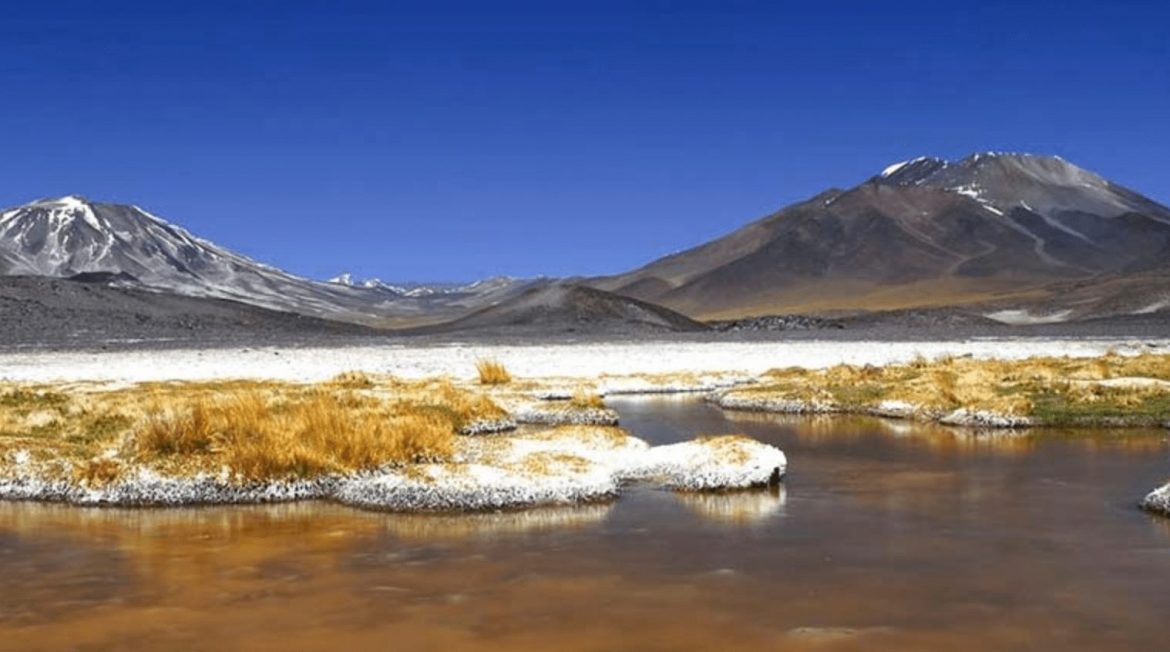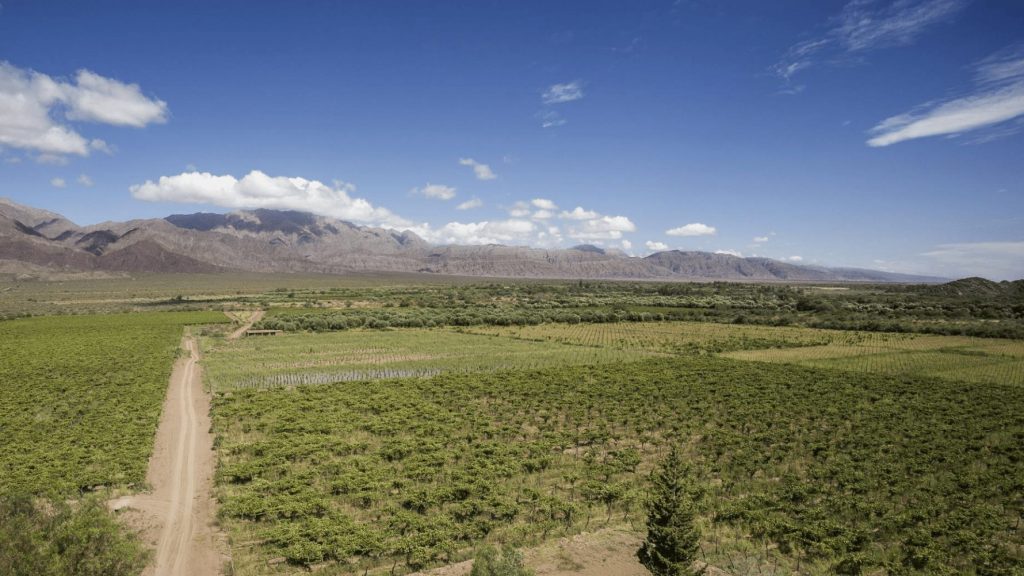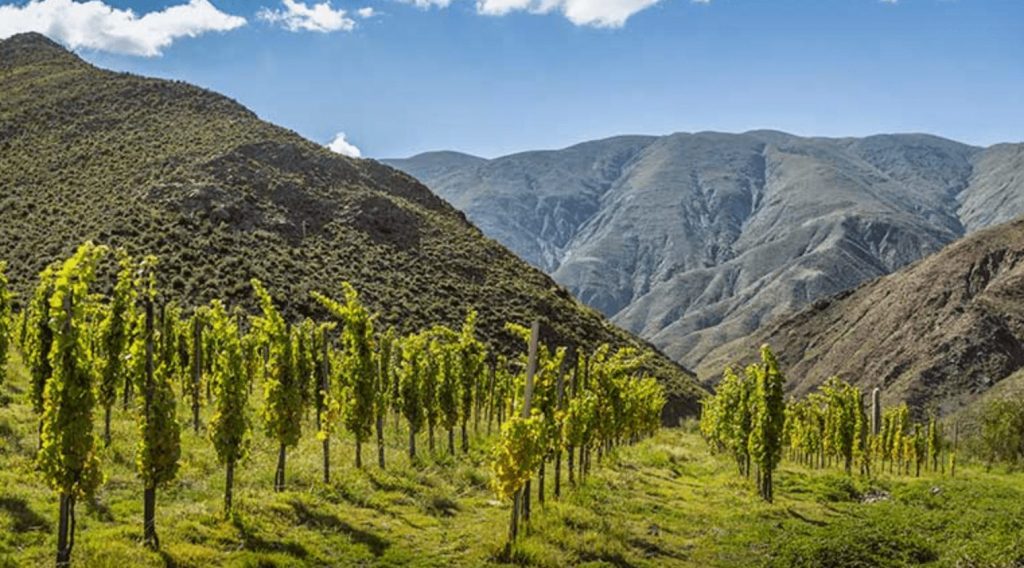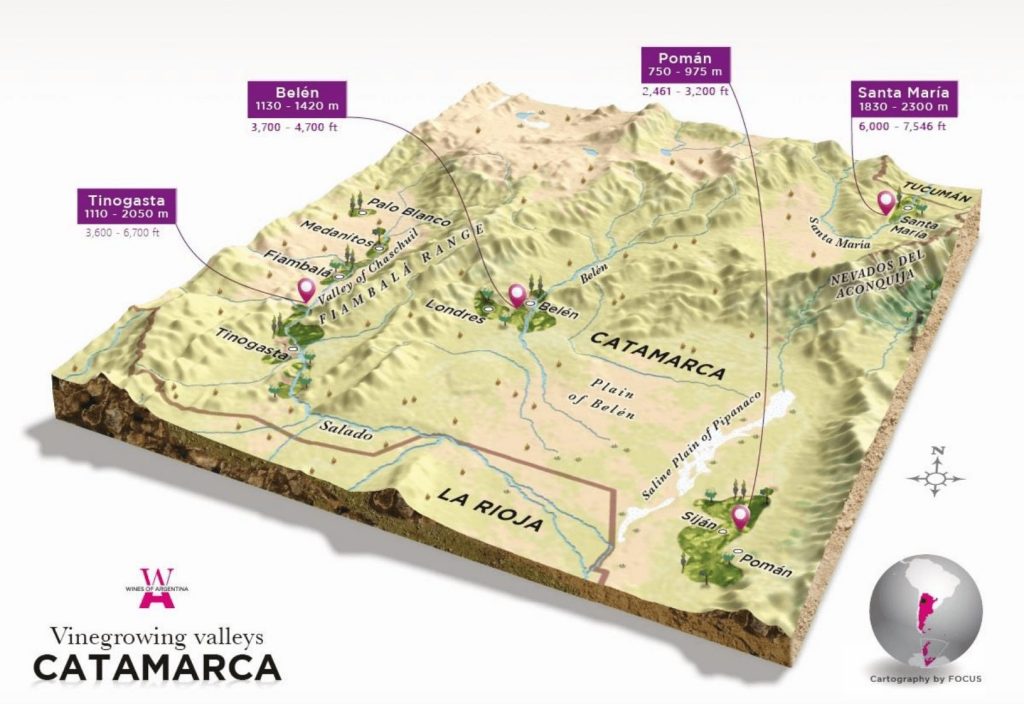With over three-quarters of the province covered by mountains, Catamarca’s wine regions are unsurprisingly defined by their mountains and moderated by their altitude. Catamarca’s mountainous isolation meant that it didn’t really develop as a commercial wine region until the 1930s onwards but today the large province is the fifth-most important producing province in Argentina.
Bordering both Tucumán and Salta to the north, with its northernmost wine valley Santa María forming part of the Calchaquí Valleys, Catamarca extends down to La Rioja province in the south, Santiago del Estero in the east and Chile on the west. We can class the wine regions of Catamarca (excluding Santa María within the Calchaquí Valleys) as the valleys of Catamarca as they are all pocketed between mountains in valleys of different shapes and dimension.
The largest wine region is Tinogasta which covers a series of north to south valleys along the Fiambalá mountain range (Sierra de Fiambalá) which reaches its peak at 4,920 metres.
Although Catamarca’s number of hectares under vine is impressive, the wines are sadly less so. The province is a major producer of juice — so you won’t find as much wine coming out of Catamarca as you might expect — and also jug wine. The fact that over two-thirds of the province’s wines are also sold by the damajuana, rather than the bottle, also make it less likely to find Catamarcan wine on your travels.
Most of the juice and jug wine is being made by the high-yielding pink Cereza grape, a Criolla variety which accounts for over a third of the valleys’ vineyards. Although there is a lot of jug wine and juice being produced in Catamarca, there are also some wines of good quality coming out of this expansive series of valleys. While the Criolla varieties of Cereza and Torrontés dominate the grape landscape in Catamarca, there is increasing interest in Syrah and Bonarda from the region as well as an increase in Cabernet Sauvignon and Malbec plantations.
Fact file on Catamarca wine region (Catamarca Valleys)
-
- First planted: The first commercial plantings were in 1930s
- Hectares planted: 2,800 hectares in Catamarca province (including Santa María in the Calchaquí Valley)
- Number of producers: 1,312 vineyards in Catamarca (including Santa María in the Calchaquí Valley); 13 wineries.
- Average vineyard size & production size: 2.2 hectares
- Regions & sub-regions: Tinogasta, 1,820 hectares; Belén, 205 hectares; Pomán, 37 hectares;(Santa Maria and its 747 hectares is a sub-region of Catamarca but it is included in the Calchaquí Valleys)
- Latitude: 28.06°S (Tinogasta)
- Longitude: 67.56°W (Tinogasta)
- Altitude: 750 to 2,300 metres altitude
- Geological description: Mountainous valleys.
- Soil formation & characteristics: Sandy and deep with pebbles and some pockets of calcareous soils.
- Climate type and info: Continental, arid, mountainous.
- Avg. growing season day time: 30°C (Tinogasta)
- Avg. growing season night time: 16°C (Tinogasta)
- Diurnal range: 14°C (Tinogasta)
- Rainfall average: 150 mm per year in Tinogasta, concentrated in the summer.
- Adverse climate conditions: The arid, desert climate of Tinogasta and the valleys of Catamarca require irrigation for grape production, although the dry conditions are also quite advantageous for healthy grape production. Constant winds are also advantageous for grape health, however, there are often very strong winds which can lead to vine damage in more exposed areas and frequent and fierce Zonda winds can be a problem. Hail storms are also a regular risk in Catamarca and can cause mass destruction in very short periods of time.
- Most planted varieties: Cereza, Torrontés, Syrah, Bonarda, Cabernet Sauvignon and Malbec.
- Avg. vine age: Between 5 and 50 years.
- Vineyard management: Over three-quarters of the vineyards in the valleys of Catamarca are in parral, with only the newer vineyards of red grape varieties planted in VSP.
Catamarca valleys sub-regions
Tinogasta wine region guide
- 1,820 hectares planted
With the lion’s share of Catamarca’s vineyards, Tinogasta boasts over 1,800 hectares under vine and the wine regions are concentrated into dense pockets of plantations in this natural valley between mountain ranges. Tinogasta can also claim to have the highest altitude vineyards in the Catamarca valleys with vineyards ranging from 1100 metres to 2050 meters altitude.
Belén wine region guide
- 205 hectares planted
East of Tinogasta by 70km as the crow flies, Belén is a tenth of the size of Tinogasta and pales in comparison for altitude too with vineyards reaching a maximum altitude of 1420 metres. Belén is warmer than Tingogasta in general, with less impact from the high altitude and warmer average low temperatures (although it can similarly reach over 32°C peaks in the summer).
Pomán
- 37 hectares planted
The smallest of the sub-regions of the Catamarca valleys, Pomán is also the easternmost and southernmost with the lowest altitude vineyards which only reach up to 975 metres altitude. Its location further east means it is further distanced from the rain shadow caused by the Andes mountains, and Pomán has more rainfall than the other sub-regions of the Catamarca valleys with 344mm per year. It is also a bit warmer on average, with less impact from the altitude.
Useful resources on Catamarca wine region:
Wineries in Catamarca wine region
Finca Don Diego
Finca Don Diego winery is situated in Fiambalá valley in Tinogasta in Catamarca and focuses on organic production for exportation, including a Malbec-Syrah red blend and a single-varietal Syrah and Cabernet Sauvignon. Find out more about Finca Don Diego in our winery guide.
Cuello Roca
Cuello Roca winery started off by planting Cabernet Sauvignon and Malbec in their vineyards in the Tinogasta valley of Catamarca. Now, the bodega produces a range of red and white varieties such as Bonarda, Cabernet Sauvignon, Malbec, Merlot, Syrah, Tempranillo, Tannat, Chenin and Chardonnay. Find out more about Cuello Roca in our winery guide.
Bodega Alta Esperanza
Italian immigrant Don Vittorio Longo came to the New World in the 20th century and invested in 40 hectares near Tinogasta, near Catamarca, which became the first Longo family winery. Nowadays his grandson, Juan Longo, has continued his grandfather’s legacy with Bodega Alta Esperanza. Read more about Bodega Alta Esperanza in our winery guide.
Catamarca travel highlights
Not to be confused with Antofagasta in Chile, the Antofagasta de la Sierra region in Catamarca is the seventh heaven for nature-lovers where you will find salt plains, volcanoes, pumice rock fields and lakes.
Other outdoors activities in Catamarca include paragliding at the Balcones del Valle or simply taking in the spectacular views of the snow-covered summits of Aconquija. Or get behind the wheel and take a road trip across the San Francisco Pass which connects the Argentinean province of Catamarca with the Atacama region in Chile through the Andes mountains at an altitude which reaches 4,726 metres. Not for the faint-hearted!
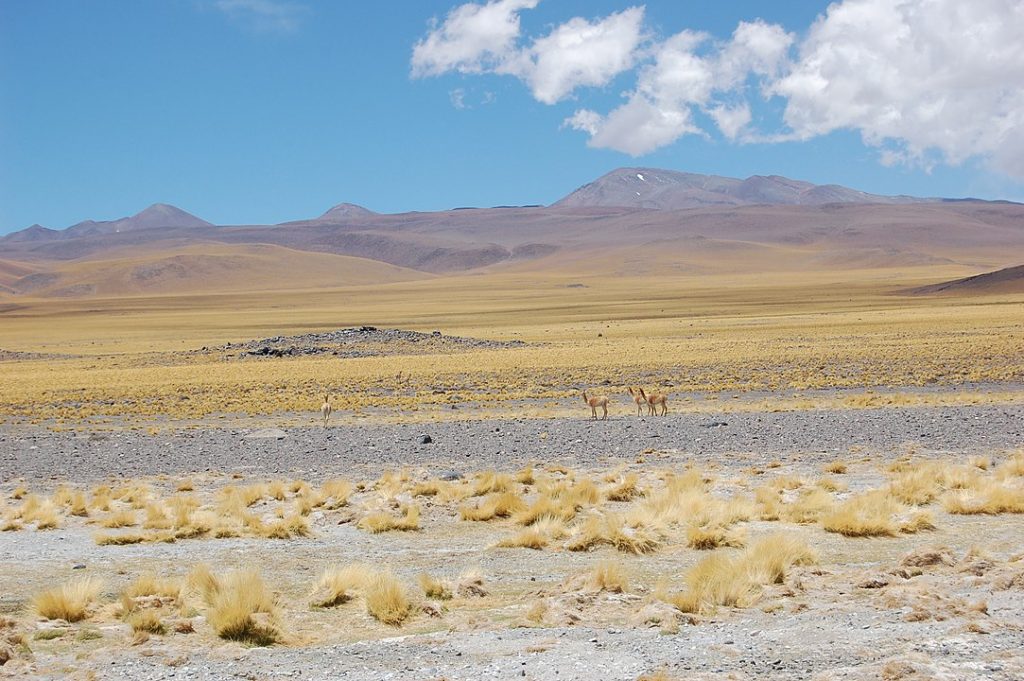
Las Huellas del Inca is one of the top trekking routes in the Shincal de Quimivil archaeological park which was built by the Incas between 1470 and 1536. As you follow the footsteps of the Inca people, look out for the archaeological sites with monumental buildings from the prehispanic period.
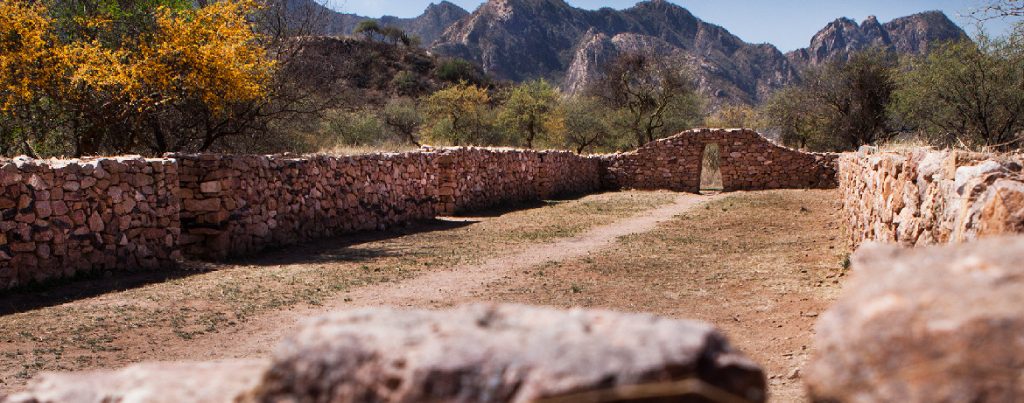
Head down to Quebrada Seca to visit the caves which are covered with petroglyphs and cave painting. You can also buy some local artisan souvenirs at las Ruinas de Shincal including knitted scarves, sugar-coated nuts and traditional sweets. As you wander around the small adobe houses with thatched roofs, you feel like you have been transported back in time.
